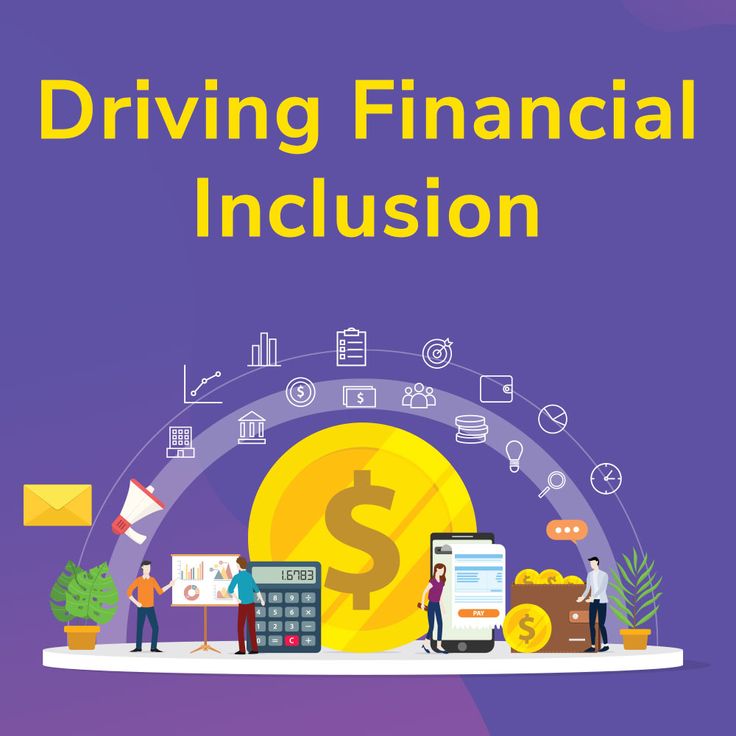Financial Inclusion: Empowering the Unbanked and Underbanked
Introduction
Financial inclusion is a crucial aspect of global economic development that ensures individuals and businesses, regardless of their background or economic status, can access useful and affordable financial services. These services include savings, credit, insurance, and payments, which are essential for individuals and businesses to thrive in a modern economy.
While financial inclusion has become a key focus for governments and organizations worldwide, there are still significant challenges, especially in underserved areas where traditional banking infrastructure is lacking. However, technological advancements, particularly in digital banking and fintech, have revolutionized the way we approach financial inclusion, making it easier for people to access financial services even in the most remote corners of the world.
In this article, we will explore the concept of financial inclusion, its importance, challenges, and how it impacts daily life, society, and the economy. We will also delve into the role of digital financial services and how they are shaping the future of financial inclusion.
What is Financial Inclusion?
Financial inclusion refers to the process of ensuring that individuals and businesses have access to a wide range of affordable and appropriate financial services. These services are crucial for people to manage their money, save, invest, and insure themselves against risks. The ultimate goal of financial inclusion is to provide everyone, especially the unbanked and underbanked, with opportunities to participate in the financial system.
Financial inclusion not only refers to having access to banking services, but also the ability to use and afford those services. Factors like affordability, convenience, and trust in financial institutions play a significant role in ensuring effective financial inclusion.
The Importance of Financial Inclusion
- Economic Growth:
Financial inclusion is a key driver of economic development. By providing individuals and businesses with access to capital, financial services stimulate investment, entrepreneurship, and job creation. When people are financially included, they are more likely to contribute to the economy, improving overall productivity and growth. - Poverty Reduction:
Financial services such as savings accounts and microloans enable individuals to protect themselves from financial shocks and plan for the future. In turn, this helps reduce poverty by providing people with the tools they need to build wealth and improve their living conditions. - Social Inclusion:
Financial inclusion can empower marginalized groups, including women, rural populations, and low-income families, by offering them opportunities to access basic financial tools. This not only improves their livelihoods but also enhances their overall well-being and social inclusion. - Improved Financial Literacy:
Access to financial services increases people’s ability to manage their finances and make informed decisions. Financial literacy improves with the availability of basic financial tools, helping individuals better understand budgeting, saving, and investing. - Reduced Inequality:
By making financial services available to everyone, regardless of their socio-economic status, financial inclusion helps reduce income inequality. It ensures that no one is left behind, which can significantly bridge the wealth gap in society.
Challenges to Financial Inclusion
Despite the progress made in promoting financial inclusion, several challenges remain:
- Lack of Access to Financial Institutions:
In many developing countries, especially in rural areas, people do not have access to physical bank branches, making it difficult to open accounts or take out loans. This lack of physical infrastructure is a significant barrier to financial inclusion. - High Cost of Financial Services:
Traditional banking services, especially in low-income communities, can be expensive due to high transaction fees, minimum balance requirements, and other associated costs. These fees often make it unaffordable for people to access financial services. - Digital Divide:
While mobile banking and digital payments are increasingly popular, there is still a significant portion of the population without access to smartphones or the internet, especially in rural areas. This digital divide restricts access to mobile financial services, which are vital for promoting inclusion. - Lack of Financial Literacy:
Many individuals, particularly in low-income communities, may lack the basic knowledge and understanding of how financial systems work. This lack of financial literacy can prevent people from fully utilizing the available financial tools and services. - Regulatory and Legal Barriers:
In some regions, regulatory and legal frameworks are not conducive to innovation in the financial services sector. Strict regulations, outdated laws, and lack of consumer protection can inhibit the growth of financial inclusion initiatives.
Role of Technology in Financial Inclusion
Technology plays a pivotal role in overcoming the barriers to financial inclusion. Digital financial services have made it possible for people to access banking and financial services through mobile phones and the internet, even in the most remote areas. Here are some ways technology is transforming financial inclusion:
- Mobile Banking and Payments:
Mobile banking has become a game-changer in promoting financial inclusion. With mobile money services like M-Pesa (in Kenya) and Paytm (in India), people can send, receive, and store money without having to rely on traditional bank accounts. This is especially useful for individuals in rural or underserved areas. - Blockchain and Cryptocurrencies:
Blockchain technology enables secure, transparent, and cost-effective financial transactions. Cryptocurrencies like Bitcoin and Ethereum can provide financial access to people who don’t have access to traditional banking systems, offering a decentralized and borderless alternative for payments and savings. - Microfinance and Peer-to-Peer Lending:
Microfinance institutions (MFIs) use technology to provide small loans to individuals who would otherwise be excluded from traditional banking systems. Additionally, peer-to-peer (P2P) lending platforms allow people to borrow money directly from others, bypassing banks and other intermediaries. - Artificial Intelligence (AI) and Machine Learning:
AI is being used to analyze creditworthiness in areas where people lack formal credit histories. This allows financial institutions to offer loans to individuals who may not otherwise qualify for credit based on traditional metrics. - Digital Identity and KYC:
In regions where people do not have formal identification, digital identity systems and Know Your Customer (KYC) processes can provide a solution. By digitizing identification, financial institutions can onboard people who do not have traditional government-issued IDs.
Impact of Financial Inclusion on Society
- Empowerment:
Access to financial services empowers individuals by giving them the means to save for the future, protect their assets, and take control of their financial lives. Women, in particular, benefit from increased financial independence and autonomy. - Economic Stability:
Financially included individuals are less vulnerable to economic shocks such as job loss or health emergencies. They can manage their savings and access credit to help them weather difficult times. - Social Mobility:
Financial inclusion is a powerful tool for enhancing social mobility. When individuals can access loans, education savings plans, and investment opportunities, they can improve their economic situation and work toward upward mobility.
Future of Financial Inclusion
The future of financial inclusion looks promising. As fintech innovations continue to evolve, the gap between the financially included and excluded will continue to narrow. Governments, organizations, and the private sector are working together to create policies and frameworks that facilitate digital financial services and address the challenges faced by underserved populations.
By 2025, we can expect:
- Wider adoption of digital financial services, especially in developing countries.
- Increased use of AI and blockchain to create more inclusive financial ecosystems.
- Greater collaboration between fintechs, banks, and governments to provide affordable financial solutions.
Conclusion
Financial inclusion is critical for economic development and poverty reduction. By providing individuals and businesses with the financial tools and services they need to thrive, financial inclusion empowers people, reduces inequality, and boosts social mobility.
Technological advancements are playing a significant role in bridging the gap and providing access to essential financial services. However, continued efforts are needed to overcome the challenges of access, affordability, and literacy. As we move into the future, financial inclusion is set to become a cornerstone of global economic prosperity.










